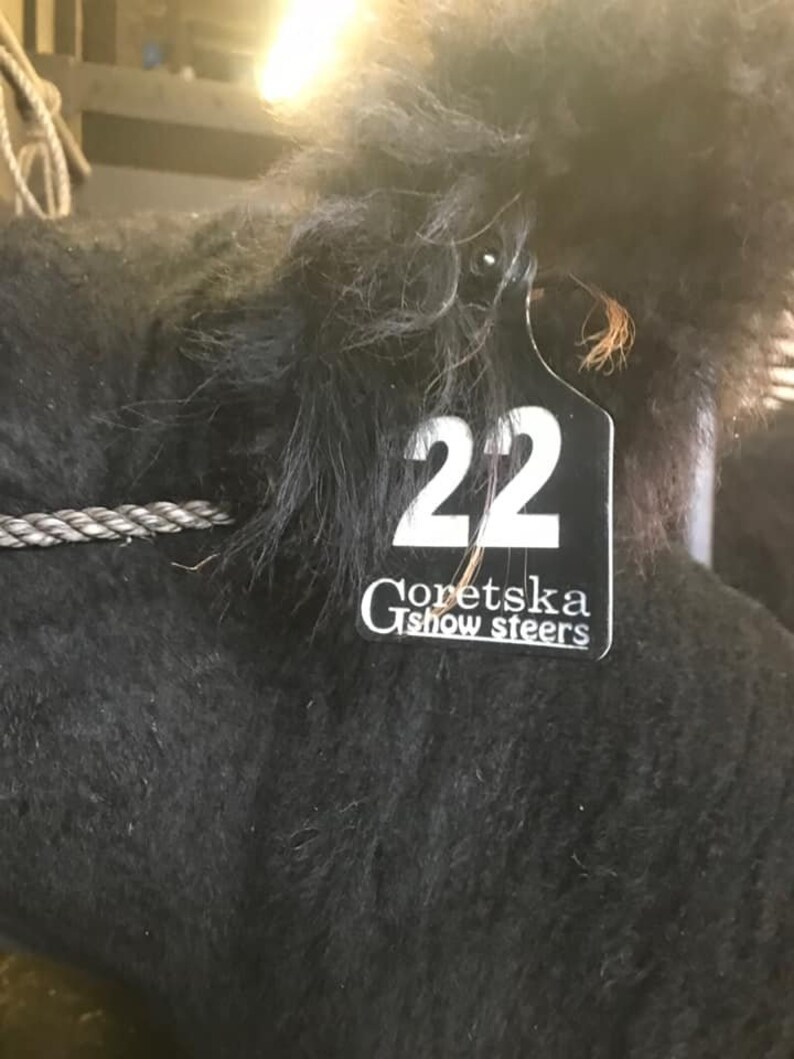

A number tag goes in the right ear on everything. I currently use identification tags with our brand and phone number in the left ear on every thing. I would retag replacement heifers once they made the cut.įast forward to now. The calves I would tag 1 what ever for the purpose of matching them up and it fidnt really matter what was on the calves that went to auction.

If a cow was removed from the herd I would fill her number back with a heifer to keep them in sequential order. I use to start at 1 with momma cows and go in order from there. I've also tagged left and right for male and female because I'm sure it has its purpose, but eventually I got away from that also. At one point I was tagging different properties different colors to help know where they came from. You can definitely tag what every colors you want and even use different colors.
#Ear tagger for cattle how to#
I will look up videos as to how to do it but do I need to be cautious as far as preventing infection and dip the tagger in iodine or any disinfectant? I don't dip mine, but it probably is a good idea.Īny other tips would be much appreciated. So the first heifer through the chute will be 220, followed by 320, etc.ģ) I have never tagged an animal before but I’m using the Allflex tags and the Y-tagger. I avoid the numeral 1 because I also brand this same number, and 1 is often difficult to read. The first digit is sequential, followed by the year the calf was weaned. When I retain heifers that tag is replaced (and re-used later) with one with my numbering system. No, color doesn't matter.Ģ) What system do you use for the numbering? I have heard of tagging right ears for male and left for female, which I like, but as far as the numbering goes, what system do you use? Right ear for male and left for female is a good system. Here are a few questions I had.ġ) For beef cattle, is there a specific color that is most popular or that I should be using? I chose green tags but I not sure if the color really matters at all. I would like to tag them for my own records. The previous owner however didn’t keep any records of them. I am keeping one cow/calf pair, and two heifers. I purchased some cattle at the start of this year and there are purebred Herefords, unregistered. Knowledge of how to properly place ear tags, use applicators, and precautions are essential for use of ear tags for identification in cattle.I had a few questions concerning ear tagging. This, in turn, would make managing a cattle herd very difficult. Without the use of an ear tag, it would be very difficult to differentiate between different cows. Proper application is essential to this process and knowing what to and not to do will benefit an individual greatly. It may take some time to perfect a tagging technique, but in the end, it will help a cattle operation to keep accurate records and be able to account for what is and has happened in their herd. If the infection does not resolve consultation with a local vet is necessary.Īll of the information that can be gathered here is very beneficial in running a farm or ranch. In the case of a removed tag antibiotics and resolution of the infection should occur before reapplication of a tag. If noticeable pain, swelling, or discharge is developed, the tag may need to be removed. Lastly, it is important to monitor tagged livestock for infection or tissue death. Management of the applicator is also important, and one must know how to properly use and clean this tool. When applying a tag, reduced head movement will aid in assuring that the tag is placed in the correct position. Tags are an essential identification tool that can carry a variety of information and help both farmers and ranchers in their operations. Knowing how to properly use these components will aid in avoiding complications. There are three important tools to use when placing an ear tag the applicator, stud, and button. To properly tag a cow or calf one must understand the importance of placement, identification, precautions, and use of the tag applicator.Įar tags help us to keep track and record information such as gender, age, weight, when a cow last calved, number of calves she has had, etc.

It is important to use this practice properly to avoid infection or tag lose. Ear tagging is an essential part of farm or ranch procedures and can aid in identification. There are many critical management practices that are necessary to efficiently run a cattle operation.


 0 kommentar(er)
0 kommentar(er)
